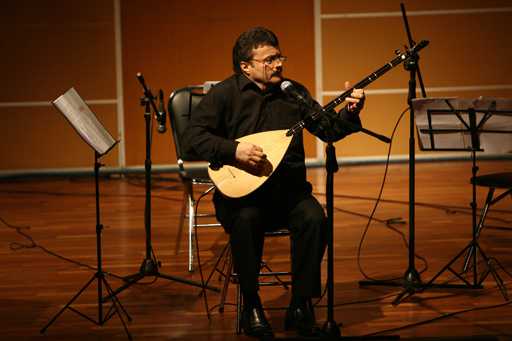Rebecca Seal cooks up a storm in Istanbul

Deep in the lanes of Kadikoy market, I am learning about baklava. My guide, Olga Tikhonova-Irez, who runs food tours and cooking courses, is explaining how the 40 layers of pastry, nuts and sugar syrup in baklava are assembled, and how some Turks will happily eat half a dozen as a mid-morning snack. We have been eating treats all morning — mussels stuffed with spiced rice, meaty pastries, pomegranate Turkish delight — so I can barely manage one sticky sweet mouthful, upended on a fork in the local fashion.
Turkish food isn’t as highly regarded in Britain as it should be — we think it’s all late-night kebabs, pickled chillies and garlic sauce, but we’ve got it very wrong. Turkey has one of the richest, most varied and exciting cuisines in the world, and combines influences from the Ottomans and Persians as well as Asian and Middle Eastern countries, with farmers and fishermen still providing most of the food the population consumes: everyone cooks with local, seasonal ingredients.
Olga, a smart, friendly but very determined and no-nonsense former businesswoman in her late thirties, is going to teach me just a snippet of what she knows. She is Russian but fell in love with Istanbul and its food when visiting several years ago, gave up her high-powered consultancy job and moved to the city to teach visitors how to cook it. Later she met the man who would become her husband, Özgür, whose mother has a traditional restaurant just outside Istanbul, Zelis Çiftligi; Olga works in the kitchens at weekends.
Istanbul is captivating, and not just because of the food. We’re staying at the brand-new Marti Hotel — one of Istanbul’s growing collection of luxurious hotels — which sits just north of Taksim Square (equivalent to Leicester Square). There’s a huge, grand entrance, decked out in marble and gold, stone hamam-style bathrooms and a restaurant with sweeping views of Istanbul’s skyline. To get from there to Kadikoy, we’ve travelled via a funicular and a short ferry ride across the Bosphorus, the stretch of water separating the European side of the city from the Asian. It’s a journey that in less than an hour takes in elegant businessmen and swanky office blocks, tiny striped handcarts selling twists of sesame-studded bread, beautifully tiled mosques and narrow minarets, shopping centres, and giant white cruise liners dwarfing tiny wooden fishing boats.
From the whirling madness of central Istanbul’s traffic, we’ve made it here, to a very different kind of bustle; shoppers inspect the redness of fish’s gills or the plumpness of tomatoes, and old men with huge wicker baskets on their backs wander through the market, looking to pick up work portering people’s bags. In the past, these porters had another role: women would pay them to bring their husbands home from a night out on the local aniseed spirit, raki. Consequently Turkish slang for being hammered is ‘to end up in a basket’.
We’re here to collect the ingredients for the feast we will later cook in Olga’s flat: piles of tiny silvery anchovies; helva, a solid, sweet sesame paste; courgettes and cheese for fritters; and aubergines to roast and turn into a salad. We also get the chance to try a short, black Turkish coffee and numerous tiny glasses of sweet Turkish tea. Plus, we meet Olga’s favourite fishmonger, who poses for photos around his immaculately arranged trays of horse mackerel and sea bass, before we visit a branch of the oldest sweet shop in Istanbul (the original opened in 1777); the wooden frontage gives way to glass counters piled with sticky sweet sesame helva and Turkish delight.
This isn’t an area foreign tourists come to. How did she find out about all these shops without a guidebook? ‘When I arrived, I followed older, well-dressed women around the market. The locals are very demanding of their shops and they showed me the way. Later, I learned that specialisation is very important here, so I know not to trust anywhere that sells everything. You go to one place for your Turkish delight, another for your baklava and others for bread or vegetables.’
After a short journey, laden with bags, on a small antique tram, we arrive at Olga’s apartment (with an enviably well-appointed open kitchen) and the work begins. I spend a happy few hours gutting anchovies for an anchovy and rice pilaf; blackening peppers and aubergines until they blister, then mixing them with parsley and pomegranate molasses to make a sharp, smoky salad; and learning how to fry perfect feta and courgette cakes — crisp and brown on the outside and soft, cheesy and squidgy within. I also discover the secret to perfect, fluffy rice — ‘It’s shameful for a Turkish cook to serve sticky rice,’ says Olga — soaking it in warm water for half an hour before cooking.
Once everything is prepared, Olga pours us some delicious Turkish white wine and we demolish the lot together. She can take up to six on a course; today it’s just the two of us. Just when we think we’re completely stuffed, Olga whips up brûlée with the helva, melting it and adding sour apple before sprinkling it with cinnamon.
On the boat ride back to the hotel, all we can do is stretch out on the wooden benches, feeling full and happy. Unsurprisingly, we don’t manage to eat any dinner that night. ES
Pictures by Steven Joyce
CHECK IN
Rebecca Seal flew to Turkey with Pegasus Airlines, tickets start at £53.99 one way from Stansted including taxes and charges (flypgs.com). She stayed at the five-star Marti Hotel in Taksim (marti istanbulhotel.com). Rooms start at £166. For details of how to book Olga Tikhonova-Irez’s Istanbul walking food tours and cookery courses, go to delicious istanbul.com
Istanbul: Recipes from the heart of Turkey by Rebecca Seal is out in July (Hardie Grant, £25)

Leave a Reply